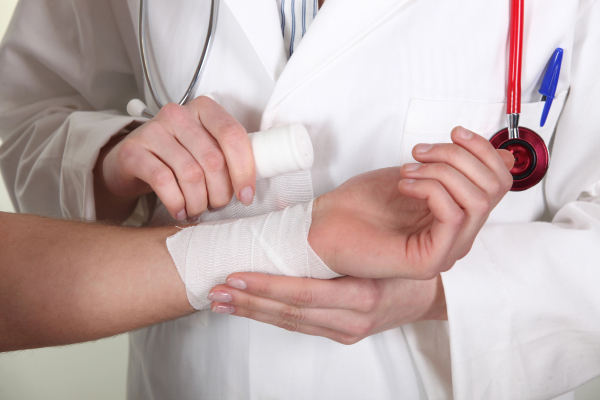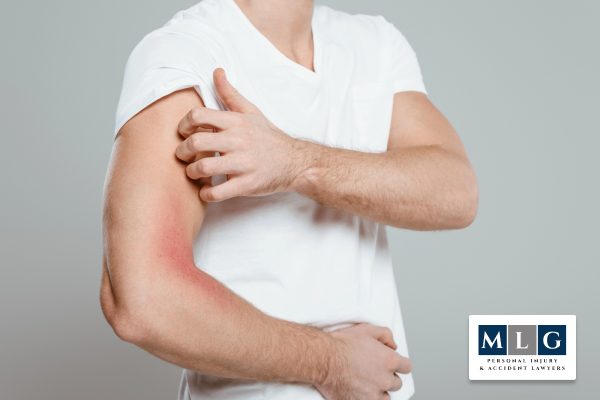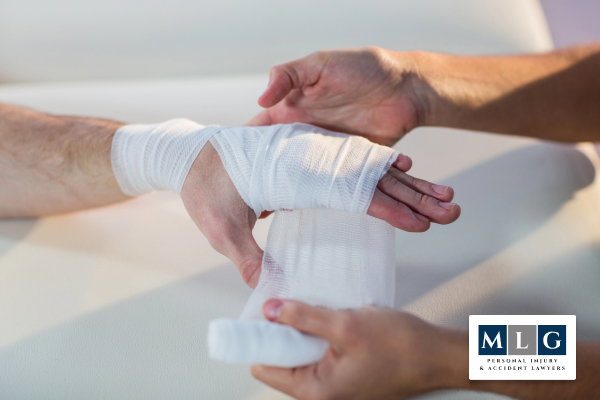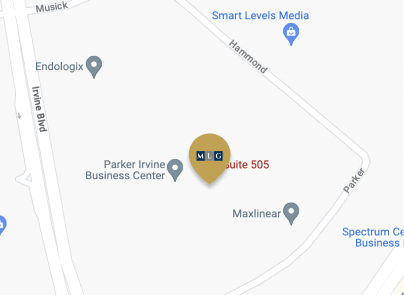
Motorcycle accidents can lead to many injuries, including road rash. Road rash happens when skin scrapes against the pavement during a fall. It can range from mild to severe and needs proper care to heal.
MLG Personal & Accident Lawyers help those who have suffered road rash injuries after a motorcycle crash. Our experienced team is here to guide you. From seeking medical attention to pursuing compensation, we can help protect your rights.
What is Road Rash?
Road rash is a type of skin abrasion caused by sliding on rough surfaces during an accident. It is common in motorcycle crashes and can affect different layers of skin. Road rash injuries are classified into three degrees. These include:
- First-degree road rash is the mildest form. It causes redness and minor irritation. It often heals quickly with basic care.
- Second-degree road rash is more severe. It damages deeper skin layers and may involve slight bleeding or oozing.
- Third-degree road rash is the most serious. It can damage muscle tissue and require immediate medical attention. In some cases, skin grafting surgery is needed.
Knowing the severity of your road rash helps determine the right treatment. Proper care is very important to prevent infection and promote healed skin.
Symptoms of Road Rash

Road rash symptoms vary based on severity. Common signs include redness, pain, swelling, and bleeding. Severe cases may show signs of infection.
A few detailed symptoms that are frequently associated with road rash include:
Redness and Skin Irritation
Redness and skin irritation are common with first-degree road rash. The skin may appear bright red and feel tender to the touch. Minor injuries like this often heal without complications.
Motorcycle riders with redness or irritation should clean the area gently. Applying an antibiotic ointment can help prevent infection. Over-the-counter pain relief may also ease discomfort. Healed skin typically appears within a few days if the wound is properly cared for.
Ignoring redness can lead to further complications. Even slight injuries need attention to ensure they don’t worsen over time.
Open Wounds or Abrasions
Second-degree road rash often results in open wounds or abrasions. The top layer of skin is scraped off, exposing the sensitive tissue beneath. This can lead to bleeding or oozing fluid.
It’s important to seek medical attention for open wounds. Cleaning the wound thoroughly helps prevent infection. Severe road rash may require dressing changes and careful monitoring for signs of infection. If ignored, open wounds can turn into infected road rash, leading to more serious issues like septic shock.
Proper care ensures the wound heals and reduces the chance of scarring.
Swelling Around the Affected Area
Swelling is a sign of tissue injury. It occurs when fluids build up around the damaged area. This is common with second-degree and third-degree road rash.
Elevating the injured area can reduce swelling. Applying a clean, cool compress also helps. If swelling worsens or comes with other signs of infection, seek medical attention immediately. Severe swelling might indicate a deeper issue needing professional care.
By addressing swelling early, you can improve recovery and avoid complications.
Bleeding or Oozing Fluid
Bleeding or oozing fluid is a clear sign of second- or third-degree road rash. This symptom requires immediate cleaning to prevent infection.
If bleeding is heavy, apply pressure with a clean cloth until it stops. For oozing wounds, use sterile bandages to keep the area covered. Change dressings daily to avoid life-threatening infection or septic shock. Severe road rash may need advanced medical treatment, such as skin grafting surgery. The sooner you see a doctor, the sooner you can start the recovery process.
Pain or Tenderness in the Wound
Road rash wounds are often extremely painful. Tenderness can last for days, depending on the severity. Pain is a natural response to damaged skin but should not be ignored.
Over-the-counter pain medications can reduce discomfort. For severe road rash, prescription painkillers may be needed. If the pain worsens or does not improve, consult a doctor. Signs of infection could explain increasing tenderness.
Managing pain effectively helps riders focus on recovery and regain comfort.
Steps to Treat Road Rash Injuries
- Clean the Wound
Wash the area gently with soap and water to remove dirt and debris. This prevents infection. - Apply Antibiotic Ointment
Use an antibiotic ointment to protect against bacteria. This helps the wound heal faster. - Cover the Wound
Use sterile bandages or gauze to keep the area clean and protected. Change the dressing daily. - Monitor for Infection
Watch for signs of infection, like pus or swelling. Seek medical attention if these occur. - Seek Medical Care if Needed
For severe road rash or deep wounds, consult a doctor. Immediate medical attention is necessary for third-degree road rash.
Make sure you follow these steps to treat road rash. This helps ensure the wound heals properly while minimizing complications.
Medical Treatment of Road Rash from a Motorcycle

Road rash injuries from a motorcycle accident often require professional medical treatment, especially in severe cases. First-degree road rash may heal with basic home care, but second-degree and third-degree road rash often demand more attention.
Doctors begin by cleaning the road rash wound to remove debris and prevent infection. For second-degree injuries, they may prescribe an antibiotic ointment to promote healing and prevent complications. Severe road rash, such as third-degree injuries, may require more intensive medical treatment, including stitches or skin grafting surgery for deep tissue damage.
Medical attention is also vital to address signs of infection, such as pus, increasing redness, or fever. Infected road rash can lead to serious health risks, including septic shock. Prompt treatment minimizes the risk of life-threatening infection and helps restore the skin.
If you’ve suffered road rash injuries, seek medical attention immediately. Proper care can prevent complications and support faster recovery.
FAQs
How Long Does Motorcycle Road Rash Take to Heal?
The healing time for motorcycle road rash depends on its severity. First-degree road rash typically heals within a week. Second-degree road rash may take two to three weeks, while third-degree road rash can take months. Severe cases may require advanced medical treatment, like skin grafting, to fully recover.
What Is the Fastest Way to Heal a Road Rash?
The fastest way to heal a road rash is to keep the wound clean and protected. Wash the area gently with soap and water, then apply an antibiotic ointment. Cover the wound with a sterile bandage and make sure to change it daily. Proper care helps prevent infection and speeds up healing.
What Can I Put on My Motorcycle Road Rash?
To treat motorcycle road rash, you can apply an antibiotic ointment, such as Neosporin. This helps prevent infection and promotes faster healing. For pain relief, use over-the-counter creams like lidocaine. Always cover the wound with a clean, sterile bandage after applying the ointment to keep it protected.
What Ointment is Good for Road Accidents?
Antibiotic ointments like Neosporin or Bacitracin are good for road accident injuries. These ointments prevent infection and keep the wound moist for quicker healing. For deeper wounds or severe road rash, consult a doctor for prescription-strength creams. Using the right ointment ensures proper care and reduces the risk of complications.
Is Betadine Good for Road Rash?
Betadine can be used to clean road rash wounds because it kills bacteria and prevents infection. However, it should not be used excessively, as it can irritate the skin. After cleaning the wound with Betadine, rinse it thoroughly, apply an antibiotic ointment, and cover it with a sterile bandage.
Call Our Orange County Motorcycle Accident Lawyer Today

If you’ve suffered serious injuries from a motorcycle accident on the road, you need experienced legal help. Serious road rash, broken bones, and other injuries can change your life. These injuries often lead to costly medical bills, missed work, and ongoing pain. MLG Personal & Accident Lawyers understand the challenges you face after a motorcycle crash.
Our team has the knowledge and experience to help you seek the compensation you deserve. Whether you’re dealing with serious road rash, broken bones, or other damages, we’re here to guide you through the legal process. We’ll fight for your rights and work to get the support you need for your recovery.
Don’t face this alone. Contact us today for a free consultation. We would be honored to fight for you and position you for a successful recovery process.
Schedule Your Free Consultation
"*" indicates required fields


